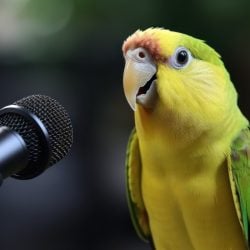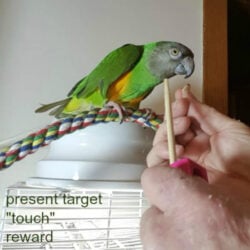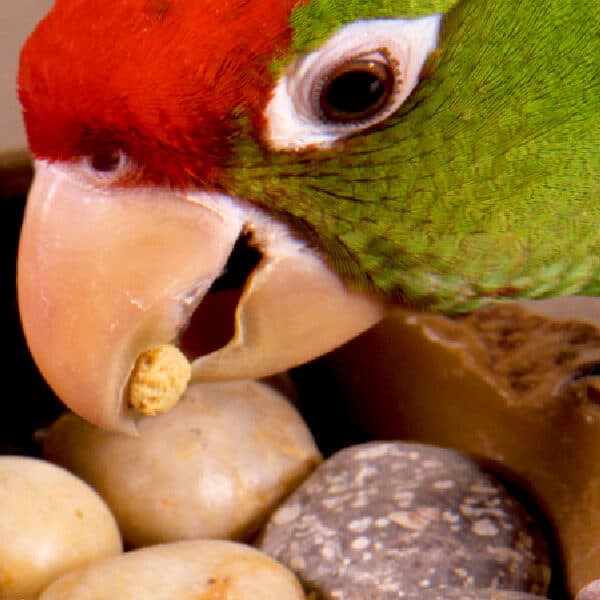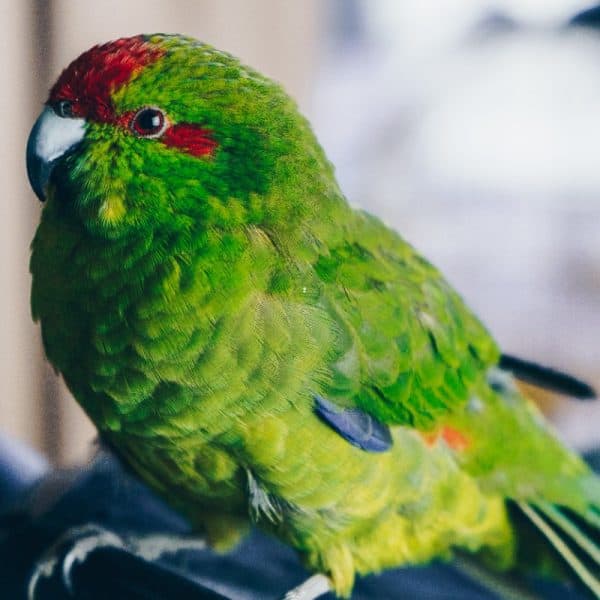Last Updated on by Mitch Rezman
These instructions are found on bags of Roudybush bird food
Birds that had never been fed pellets or crumbles generally do not recognize the is food at first.
Also, pellets are lower in fat than seeds, so at first most birds will not like them as much as seeds.
Some birds readily accept pellets or crumbles as soon as they realize they are edible. While some individuals are very resistant to switching
Ways to switch your birds over to pellets or crumbles:
1) Controlled Cold Turkey: this method may be used with finicky, resistant birds that are starting out at a normal or excessive body weight. Remove all the old diet and fill the theaters with pellets. If you have the ability to weigh your bird, weigh it first thing in the morning on the day of the switch. weigh your bird every morning.
If your bird loses more than 3 to 5% of its body weight, put it back at its old diet for one to two weeks, then try the switch again.
If you are unable to weigh your bird, change the cage papers the day you make the switch and do not use litters, so you can evaluate the droppings. If the fecal part of the dropping is small and dark reign or black or if the droppings have no fecal portion, it means your bird is not eating.
You can go for two full days for small species of birds and three full days for large species of birds. If your birds droppings are still anorexic at the end of the switch. Put your bird back on its old diet for one to two weeks and then try the switch again. Most birds will switch the first time. The most finicky birds may take three attempts.
2) Gradual Switch:
This technique works with birds that will try and eat many different foods. Mixe three quarters of the original diet with one quarter of the Roudybush pellets or crumbles. Feed this mixture for 1 to 2 weeks.
Continue increasing the proportion of Roudybush when you reach three quarters or more Roudybush, change the cage papers and do not use litter so you can evaluate droppings.
If you see anorexic droppings (see description in above controlled cold turkey), and more of the original diet for a week or two. This method is slower but safer for those owners who cannot closely monitor their birds. T
3) Act as if you were eating the Roudybush: Many birds will try foods they see their owners eating. Many birds will like Roudybush pellets.
Once they have tried them as treats from their owner and convert easily after that always make sure your bird droppings indicate they are eating. Once you completely make the switch to pellets
4) Handfeed as a treat: Some birds will eat almost anything they think you are eating. Act as if you are eating the Roudybush then offer some to your bird. This can be sufficient to teach your bird that Roudybush is food. Then the old food can be replaced with Roudybush. Again, watch the droppings when you make the complete switch.
5) Soak the Roudybush in juice: Some birds like moist foods and like certain fruits or fruit juices. Putting a bowl of pellets soaked in orange juice, apple juice, or fruit nectars may entice such a bird to eat the pellets.
If this method is used make sure you only leave the soaked pellets in the cage for an hour or so to prevent spoilage. Once the bird is eating the soaked pellets, gradually decrease the amount of juice.
Author Profile
Latest entries
 African greyMay 28, 2025Teaching a Parrot to Talk: A Dice Shot of Nature and Nurture
African greyMay 28, 2025Teaching a Parrot to Talk: A Dice Shot of Nature and Nurture Bird BehaviorMay 28, 2025Parrot Target Training ~ A Comprehensive Guide
Bird BehaviorMay 28, 2025Parrot Target Training ~ A Comprehensive Guide Bird & Parrot AnatomyMay 28, 2025Ensure Your Pet Bird Stays Safe and Comfortable During Summer
Bird & Parrot AnatomyMay 28, 2025Ensure Your Pet Bird Stays Safe and Comfortable During Summer Bird & Parrot AnatomyMay 22, 2025Parrots Have Voice-Prints Like Humans-Heres How Urban Birds Find Their Flock
Bird & Parrot AnatomyMay 22, 2025Parrots Have Voice-Prints Like Humans-Heres How Urban Birds Find Their Flock




